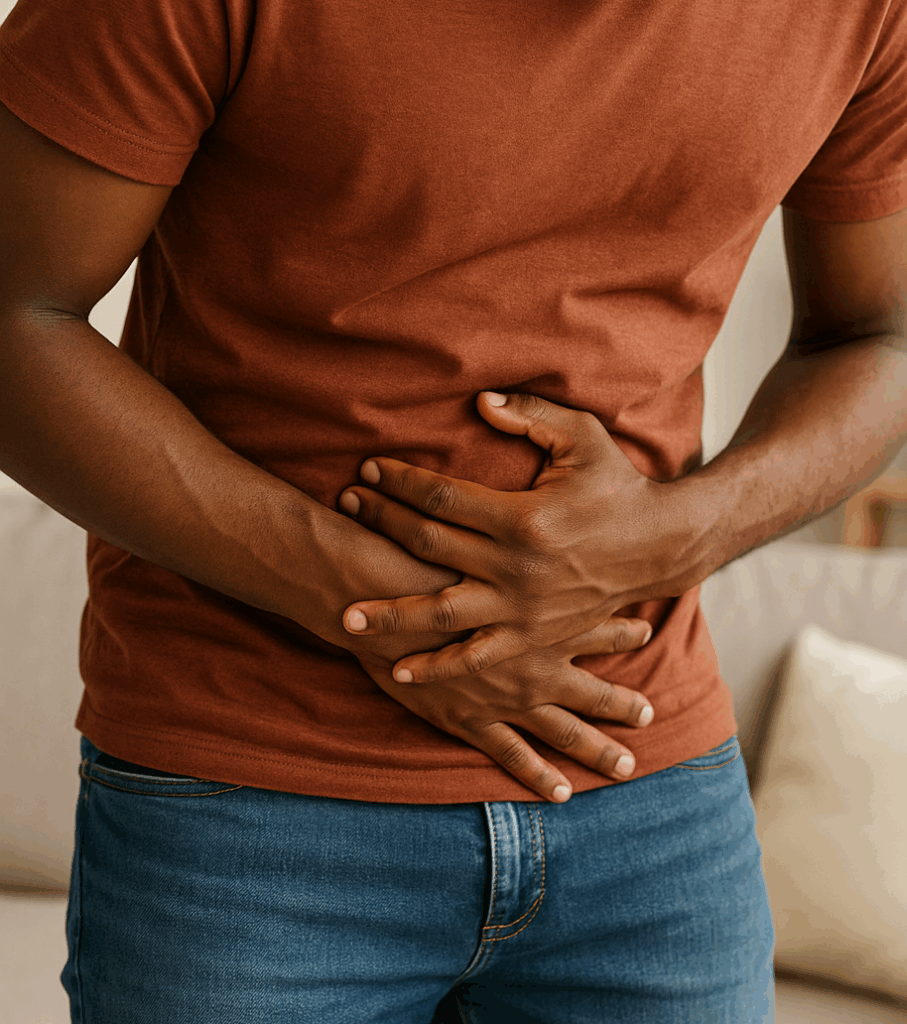Constipation & Indigestion: Simple Help and Relief Tips

Please note: This article gives basic advice only. We don’t recommend self-diagnosis. Please chat with one of our pharmacists online — we’ll help you understand what’s going on and what medicine is safest for you.
Contents
- What is constipation and what to do
- What is indigestion and what to do
- When to see a doctor
- Safety tips when using medicines
1. Constipation
What it feels like
Constipation means you’re having trouble going to the toilet. You may notice:
- You go less often than usual (less than 3 times a week)
- Your stool is hard or dry, and you need to strain
- You feel bloated or uncomfortable
- You feel like you haven’t completely emptied your bowels
It’s very common and usually not serious, but it can make you feel sluggish and uneasy.
What to do right now
- Drink more water – aim for 6–8 glasses daily.
- Eat more fibre – fruits, vegetables, beans, and whole grains help soften stool.
- Exercise – a short walk every day helps your bowels move.
- Don’t ignore the urge to use the toilet.
- If these steps don’t help, you can take a gentle laxative to help things move.
There are two main types:
- Stool softeners (like Lactulose or Milk of Magnesia): help soften stool and make it easier to pass.
- Stimulant laxatives (like Bisacodyl): help your intestines move stool along.
5 Recommended Products for Constipation
Tip: Only use laxatives for a short time unless a doctor or pharmacist advises otherwise.
2. Indigestion
What it feels like
Indigestion is a burning or uncomfortable feeling in your upper stomach or chest. It may come with bloating, burping, or gas, especially after eating.
You may feel:
- Burning in the chest (heartburn)
- Full or heavy after small meals
- Nausea or sour taste in your mouth
- Bloating or gas
What to do right now
- Eat smaller meals and avoid heavy food late at night.
- Stay upright for 2–3 hours after eating — don’t lie down immediately.
- Cut down on spicy, oily, or fried foods, and avoid too much caffeine or alcohol.
- Drink water throughout the day.
- For quick relief, take an antacid syrup or tablet.
- If symptoms keep coming back, use an acid control medicine like omeprazole or pantoprazole (once daily before meals).
- For bloating or gas, a simethicone product can help.
- For cramping pain, a gut relaxant like Buscomac (Hyoscine) works well.
5 Recommended Products for Indigestion
3. When to See a Doctor
You should see a doctor if:
- Constipation lasts more than 2 weeks or you notice blood in your stool.
- You have severe stomach pain, vomiting, or black, tarry stools.
- Indigestion continues for more than 2 weeks, or keeps coming back.
- You have chest pain, difficulty swallowing, or unexplained weight loss.
- You’re pregnant, older than 55, or have another long-term illness.
4. Medicine Safety Tips
- Read the labels carefully — some products may contain similar ingredients.
- Don’t take more than one laxative at the same time.
- Antacids can affect how other tablets work — take them 2 hours apart from other medicines.
- Laxatives are meant for short-term use — don’t rely on them regularly.
- Omeprazole and Pantoprazole should be taken once daily before eating for best effect.
- Hyoscine may make your mouth dry or cause dizziness — take with care.
Final Thoughts
Constipation and indigestion are common and can usually be managed at home with the right habits and safe medicines.
But if your symptoms don’t go away, don’t keep guessing — chat with our pharmacists online. We’ll help you choose the right, affordable treatment and make sure it’s safe for you or the person you’re caring for.
You may also like
- A Practical Guide to Weight Management, Weight Loss, and Nutrition
- A Guide to Preventive Health & Everyday Wellness
- Women’s Health, Made Simple: A Simple Guide for Healthy Living
- Men’s Health, Made Simple: A Guide to Feeling and Living Better
- A Simple Guide to a Healthy Pregnancy: What Every Expecting Mother Should Know







